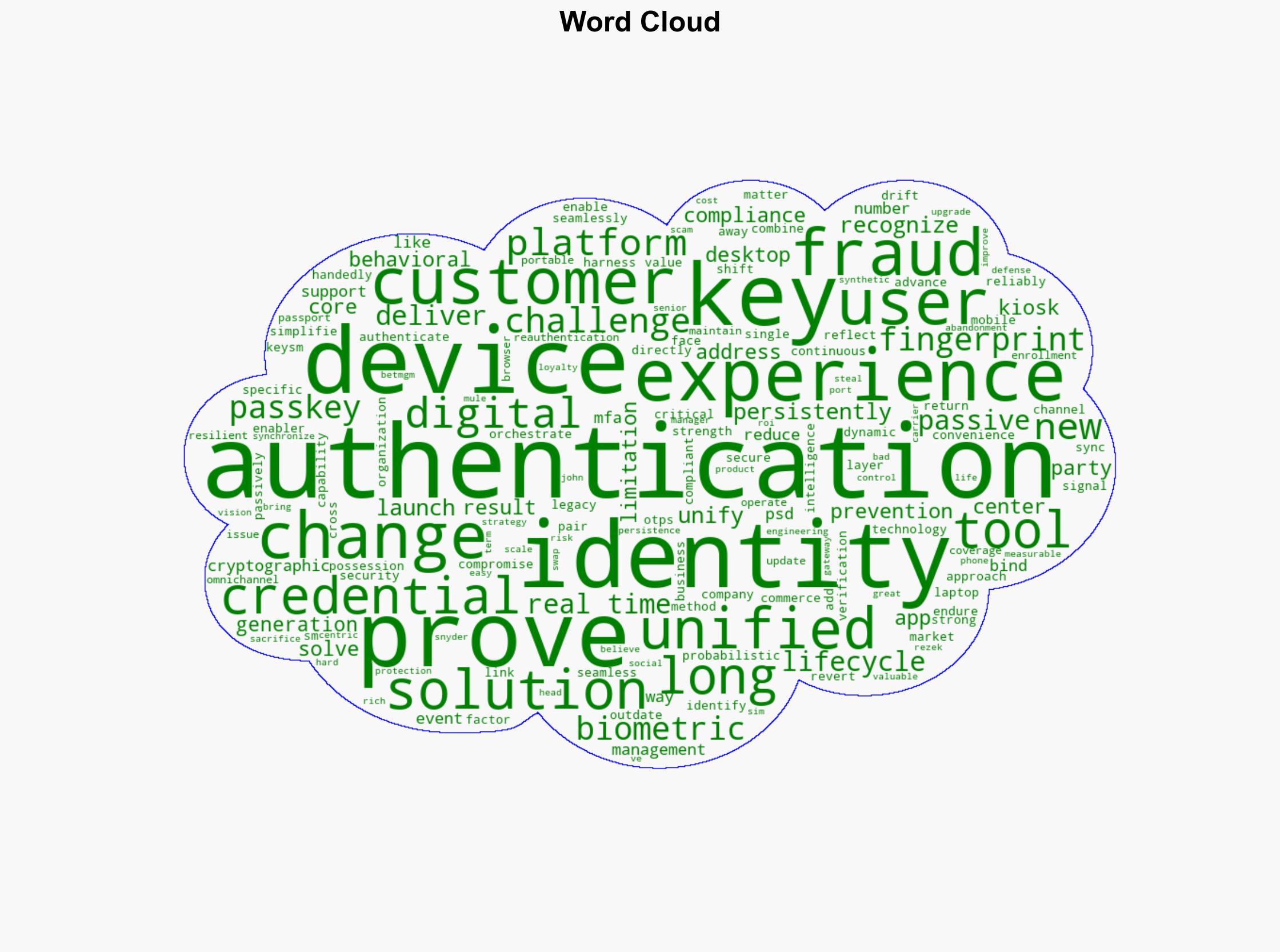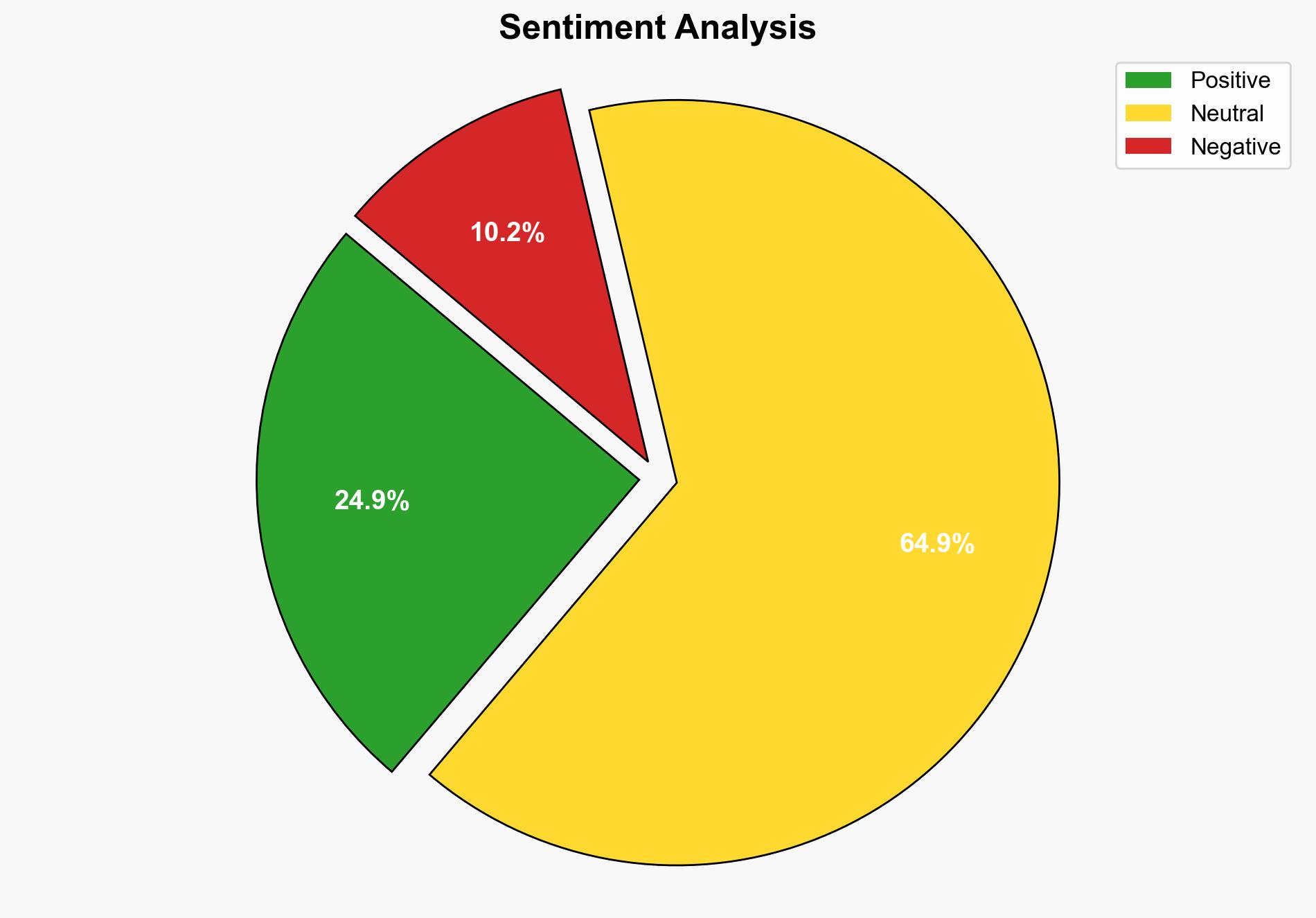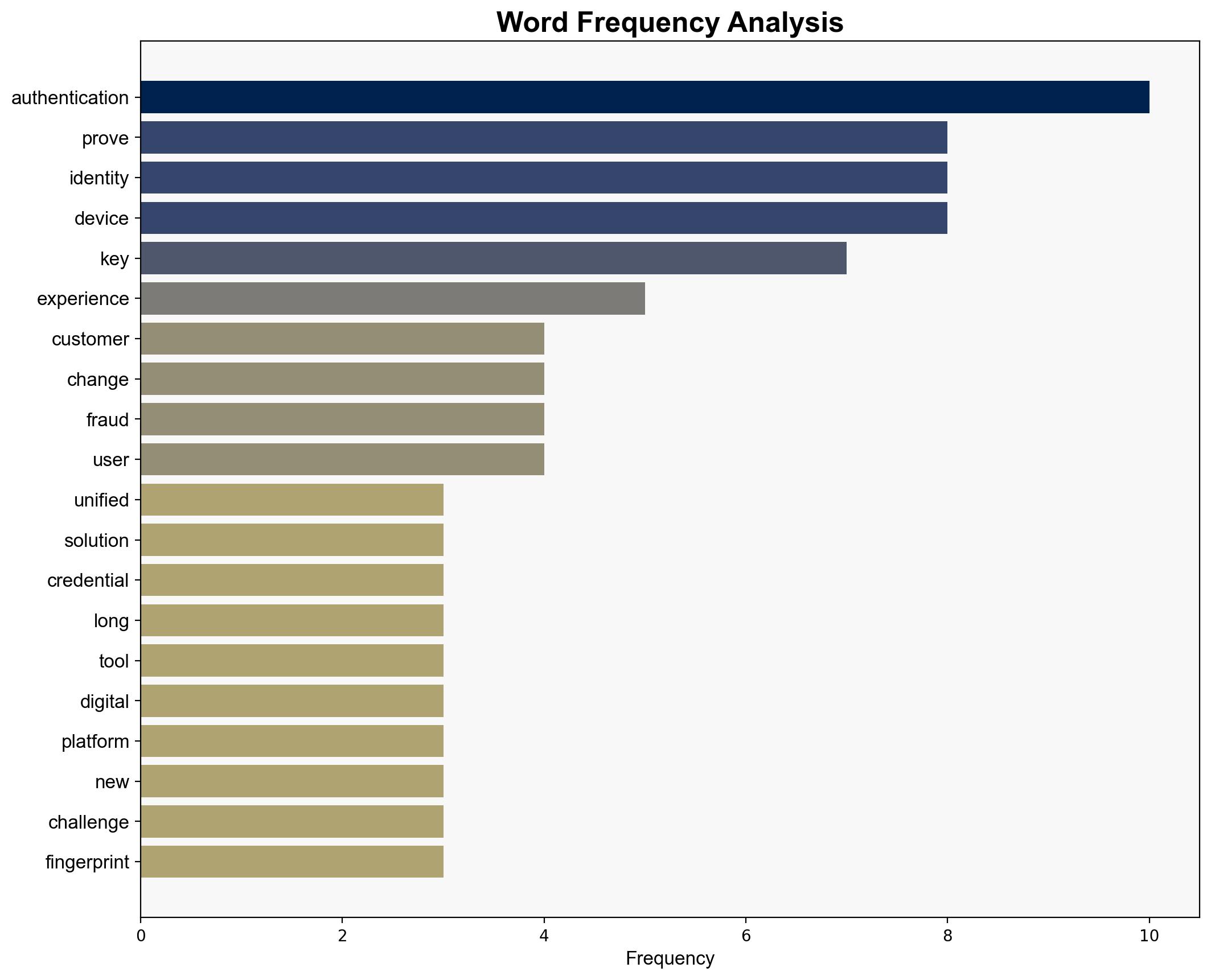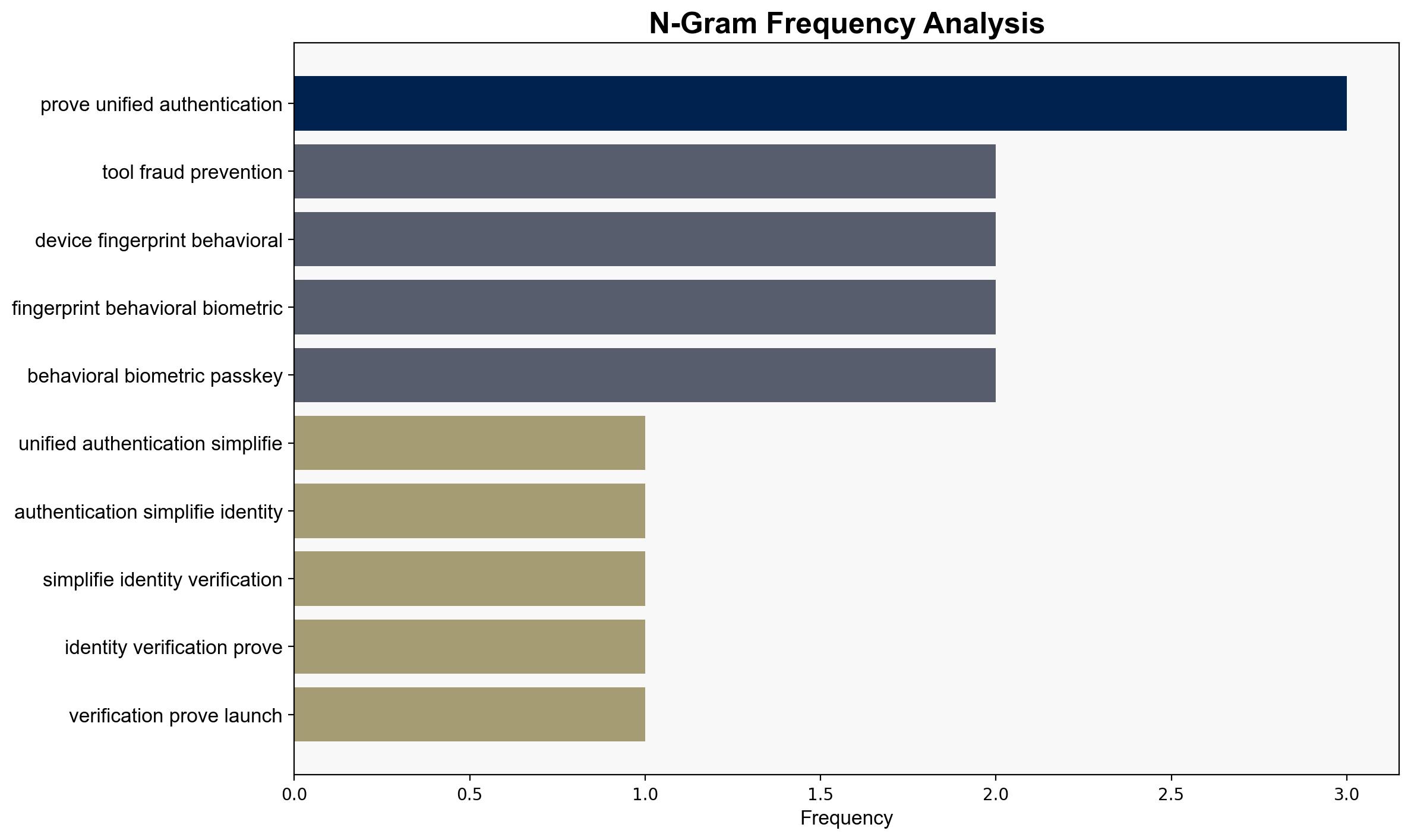Prove Unified Authentication simplifies identity verification – Help Net Security
Published on: 2025-08-12
Intelligence Report: Prove Unified Authentication simplifies identity verification – Help Net Security
1. BLUF (Bottom Line Up Front)
The most supported hypothesis is that Prove Unified Authentication significantly enhances identity verification by integrating multiple advanced technologies, thereby improving security and user experience. This conclusion is drawn with a moderate confidence level due to potential gaps in data and assumptions about technology adoption. It is recommended to monitor the adoption rate and effectiveness of this solution across different sectors.
2. Competing Hypotheses
1. **Hypothesis A**: Prove Unified Authentication effectively simplifies identity verification by using advanced technologies such as device fingerprinting, behavioral biometrics, and cryptographic keys, leading to enhanced security and user experience.
2. **Hypothesis B**: Prove Unified Authentication may not significantly simplify identity verification due to potential challenges in technology integration, user adoption, and unforeseen vulnerabilities in the system.
Using the Analysis of Competing Hypotheses (ACH) 2.0, Hypothesis A is better supported due to the detailed description of integrated technologies and their potential benefits. However, the lack of empirical data on real-world application and user feedback leaves room for Hypothesis B.
3. Key Assumptions and Red Flags
– **Assumptions**: It is assumed that the integration of multiple technologies will seamlessly enhance security without introducing new vulnerabilities. There is also an assumption that users and organizations will readily adopt this new system.
– **Red Flags**: The absence of empirical data or case studies demonstrating the effectiveness of the solution in diverse environments is a significant red flag. Additionally, potential over-reliance on technology without considering user behavior and adaptability could be a blind spot.
4. Implications and Strategic Risks
– **Economic**: Successful implementation could reduce fraud-related costs and improve ROI for businesses, but failure could lead to increased costs due to security breaches.
– **Cyber**: Enhanced security features could deter cybercriminals, but any vulnerabilities could be exploited, leading to significant data breaches.
– **Geopolitical**: Adoption of such technologies could influence global standards in identity verification, impacting international business and regulatory frameworks.
– **Psychological**: User trust and acceptance are crucial; any negative experiences could lead to resistance against similar technologies.
5. Recommendations and Outlook
- Conduct pilot programs to gather empirical data on the solution’s effectiveness and user feedback.
- Develop contingency plans for potential vulnerabilities and integration challenges.
- Scenario Projections:
- Best Case: Widespread adoption leads to significant reduction in fraud and enhanced user experience.
- Worst Case: Integration challenges and vulnerabilities lead to security breaches and loss of user trust.
- Most Likely: Gradual adoption with mixed results, requiring iterative improvements and adaptations.
6. Key Individuals and Entities
– John Snyder
– Rich Rezek
7. Thematic Tags
cybersecurity, identity verification, technology integration, user experience




